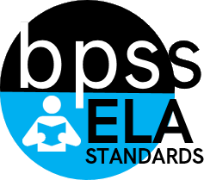ELA-09.L.02 |
9th Grade ELA Targeted Standards
(L) Language Strand
Cluster: Conventions of Standard English
ELA-09.L.02 Demonstrate command of the conventions of Standard English capitalization, punctuation, and spelling when writing. |
Student Learning Targets:
Knowledge Targets
- I can identify correct usage of different types of punctuation.
- I can identify spelling errors in writing.
Reasoning Targets
- I can evaluate and edit writing for capitalization, punctuation, and spelling.
Skills (Performance) Targets
- I can capitalize correctly when writing.
- I can punctuate correctly when writing.
- I can spell correctly when writing.
Product Target
- I can produce writing that demonstrates correct use of conventions: punctuation (e.g., end punctuation, possessive apostrophes, colons to introduce a list or quote, and semi-colons to connect independent clauses), capitalization, and spelling.
|
| Rubric - Resources |
Proficiency Scale
| Measurement of Progress |
Conventions of Language: L9-10. 1 & 2 Within the context of authentic English writing and speaking,demonstrate command of the conventions of standard English grammar and usage as well as capitalization, punctuation, and spelling. |
Sample Activity
|
| Advanced Proficient |
In addition to expectations of proficiency, student provides consistent evidence of in-depth inferences and applications that go beyond what was taught and expected.
- Uses phrases and clauses to enhance specific meaning and add variety
|
- |
| Proficient |
The student can
-
demonstrate command of the conventions of standard English grammar and usage as well as capitalization, punctuation, and spelling when writing and speaking.
-
continue to implement correct use of previously introduced conventions: punctuation usage, subject-verb agreement, pronoun-antecedent agreement, frequently confused words, verb tense, placement of modifiers, etc.
-
correctly use semicolons, conjunctive adverbs, colons, various types of phrases (noun, verb, adjective, adverb, participial, prepositional, absolute) and clauses (independent, dependent: noun, relative, adverb).
-
use parallel structure, various types of phrases and clauses to convey a specific effect and add variety, and appropriate verb choices (voice and tense).
|
- |
| Progressing |
There are no major errors or omissions regarding the simpler details and processes as the student:
-
demonstrates basic application of the conventions of standard English grammar and usage as well as capitalization, punctuation, and spelling when writing and speaking.
-
Identifies parallel structure, various types of phrases and clauses, and appropriate verb choice (voice and tense).
-
recognizes or recalls specific terminology that relates to knowledge of language, such as:
-
subject-verb agreement, pronoun-antecedent agreement, verb tense.
-
semicolons, conjunctive adverbs, colons, various types of phrases (noun, verb, adjective, adverb, participial, prepositional, absolute) and clauses (independent, dependent: noun, relative, adverb).
However, the student exhibits major errors or omissions regarding the more complex ideas and processes.
|
- |
| Novice |
With help, the student demonstrates a partial understanding of some of the simpler details and processes and some of the more complex ideas and processes. |
- |
Resources
Websites
Vocabulary |

